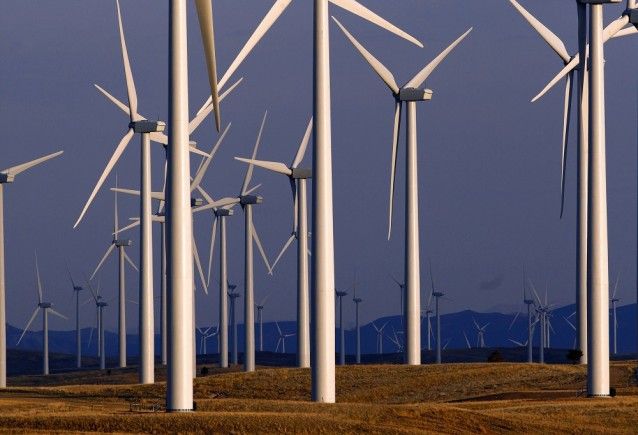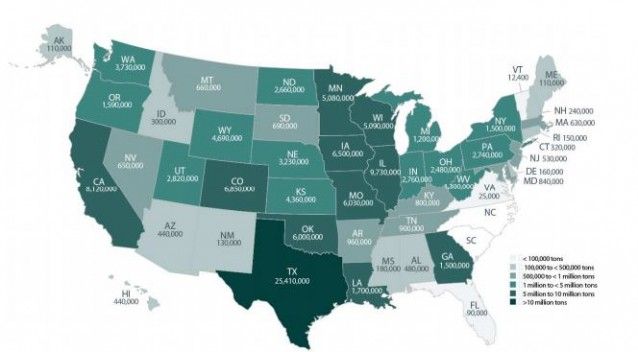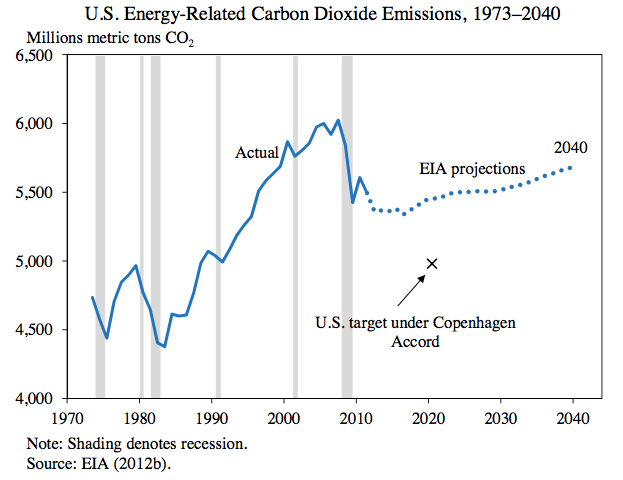Mark Del Franco of NAWindpower reports AWEA: EPA Rules Could Be Third Biggest Driver For Wind Behind PTC And RPS Policies. On Monday the Environmental Protection Agency proposed regulations to reduce carbon dioxide pollution by 30% below 2005, under Section 111 (d) of the Clean Air Act. Carbon dioxide is a primary driver of global warming.
With this announcement the wind power industry is feeling the wind filling it sails. The American Wind Energy Association's (AWEA) vice president for federal regulatory affairs, Tom Vinson says "the EPA plan could be the third largest driver of wind-powered generation behind state renewable portfolio standards (RPS) and the federal production tax credit (PTC)."
Stricter power plant regulations could mean less coal, which could open up a big opportunity for wind power. Last year, AWEA did a study that estimated the retirement of U.S. coal plants could lead to an increase of up to 17 GW of wind capacity - roughly 28% of the current installed U.S. wind generation.
“We know from firsthand experience that building more wind and solar power facilities [has] proven to be the fastest, cleanest and cheapest way to replace dirty power plants and combat climate change,” says Paul Gaynor, CEO at Boston-based wind and solar developer First Wind, adding the cost for wind power, for example, has dropped 42% since 2009.
Gabriel Alonso, CEO at EDP Renewables North America, says, “Wind energy has been a proven, cost-competitive and stable source of carbon-free electricity that has driven and continues to drive billions of dollars of investment nationwide, creating jobs and supporting rural economies while contributing to substantial reductions in U.S. greenhouse gas emissions. This rule will help accelerate that trend.”
In our headline article, Katie Valentine of Think Progress writes Wind Energy In 2013 Was Equivalent To Taking 20 Million Cars Off The Road, and reducing emissions from power generation by 5% last year, according to a new report by the American Wind Energy Association, AWEA.
The report, published by the American Wind Energy Association, found that wind energy production in 2013 resulted in carbon emissions reductions of 126.8 million tons. Some states achieved larger reductions than the national average, with 11 states reducing carbon emissions by 10 percent compared to 2011 levels through wind energy. Texas — a state which broke its record for highest wind generation ever in March — had the highest volume of carbon reductions, followed by Illinois, California, and Colorado.
AWEA’s report noted that reducing carbon also carries co-benefits: sulfur dioxide emissions drop by almost 347 million pounds per year as a result of wind energy production, and nitrous oxide emissions are reduced by 214 million pounds per year, These reductions improve air and water quality. The cost of wind energy has also been falling over the last few years — costs have dropped by 43 percent in four years, according to AWEA, due to improvements in technology.
That decrease in cost is part of the reason wind energy has expanded across much of the U.S. — AWEA found that in 2003, wind energy made up just 0.3 percent of the country’s power generation mix, but by 2008, had grown to make up 1.3 percent of the mix. So far, almost all of the country’s wind projects have been on land, but the U.S. is also exploring offshore wind as a potential for further energy generation — Oregon could be the site of the West Coast’s first offshore wind farm.
Several additional large offshore wind energy projects are underway, or in planning in the U.S. including in Maryland, Rhode Island, and Nantucket Sound.
According to the Energy Information Association U.S. solar capacity grew by 418 percent in the last four years.
As far as the AWEA is concerned the solution to America's challenge to cut carbon emissions by 30% over the 2005 level is blowing in the wind. In fact, one report I've read, yesterday suggests by choosing 2005 as the base year, we are already almost two thirds of the way to accomplishing this goal. So please do not let the critics in the coal industry and on the Republican right-wing convince you this is an economic catastrophy or impossible challenge.
So far in 2014, America has added 5,600 renewable energy jobs, with the largest growth coming from the solar industry. That number is a drop from the 12,000 clean energy jobs reported in the first quarter of 2013, partly because Congress has failed to renew the Production Tax Credit for wind energy — a $13 billion tax break to help wind compete with established fossil fuel power companies.


